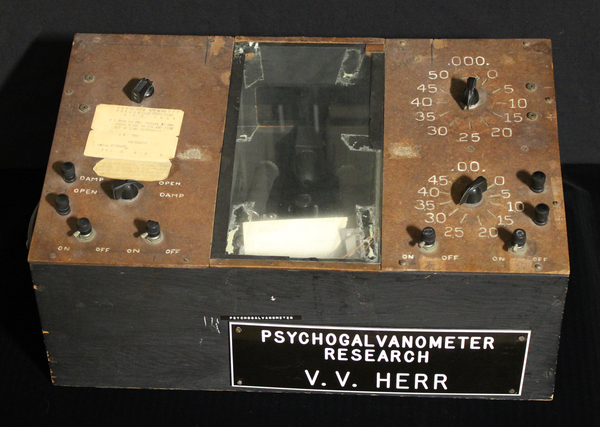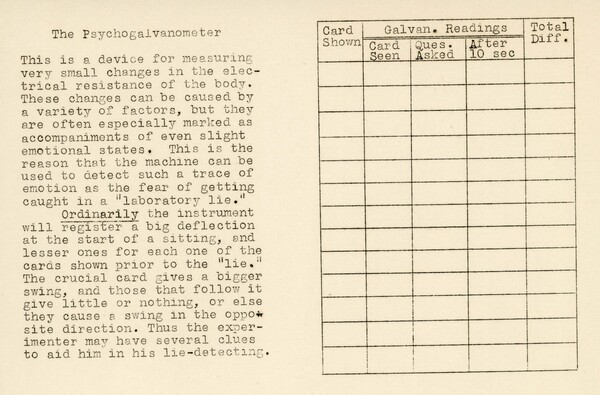Psychogalvanometer
Instruments used to explore the internal psychological state of individuals through the measurement of changes in skin conductance were first devised in the late 19th century. They continue to be used today in clinical, social, and applied psychology research. In the early 1950s, Herr designed a new instrument for measuring these subtle physiological indications of changes in emotional state. The "closed bridge" design of the Herr Psychogalvanometer represented an important modification of the widely used instrument. This allowed for a constant rather than variable current for measuring galvanic skin reflex changes. Recordings of participants' responses were made during a free word association task.
Herr collaborated with Dr. Frank J. Kobler to study whether neurotic individuals could be differentiated from healthy individuals by measuring such changes. They recorded responses to word association stimuli selected for their potential to elicit feelings of anxiety. This work was published by Herr and colleagues in a series of papers beginning in 1953. Herr and Kobler used their psychogalvanic response data to create an objective measurement to model personality and variation in emotional control. The Psychogalvanometer was also employed by numerous Loyola graduate students supervised by Herr and reported in theses and dissertations.


